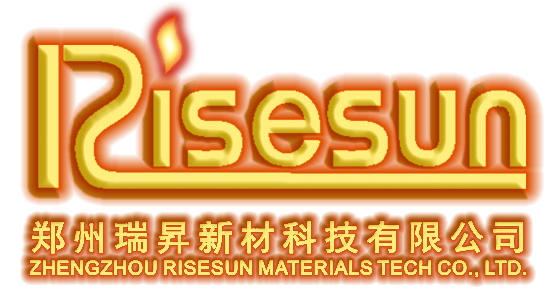10
2024
-
10
Exploring the Benefits of Hotbar SiC Heating Elements in Modern Electrical Equipment
Exploring the Benefits of Hotbar SiC Heating Elements in Modern Electrical Equipment Table of Contents Introduction to Hotbar SiC Heating Elements Understanding Silicon Carbide (SiC) The Advantages of Hotbar SiC Heating Elements High Thermal Conductivity Energy Efficiency Longevity and Durability Versatility in Applications
Exploring the Benefits of Hotbar SiC Heating Elements in Modern Electrical Equipment
Table of Contents
- Introduction to Hotbar SiC Heating Elements
- Understanding Silicon Carbide (SiC)
- The Advantages of Hotbar SiC Heating Elements
- Key Applications of Hotbar SiC Heating Elements
- Comparative Analysis: SiC vs Traditional Heating Elements
- Future Trends in Electrical Equipment Heating Solutions
- FAQs on Hotbar SiC Heating Elements
- Conclusion
Introduction to Hotbar SiC Heating Elements
The introduction of Hotbar SiC heating elements marks a significant advancement in the realm of electrical equipment. These innovative components offer remarkable performance that traditional heating solutions simply cannot match. Known for their high thermal conductivity and energy efficiency, SiC heating elements are becoming increasingly popular across various industries. By exploring the benefits of these heating elements, we can better understand their role in modern electrical equipment.
Understanding Silicon Carbide (SiC)
Silicon Carbide (SiC) is a semiconductor material that exhibits superior thermal and electrical properties. With its high breakdown voltage and thermal conductivity, SiC is ideally suited for applications requiring high power and high temperature. Its ability to withstand extreme conditions makes it a preferred choice for manufacturers looking to enhance the performance of electrical equipment.
The Advantages of Hotbar SiC Heating Elements
Hotbar SiC heating elements come with a host of advantages that set them apart from traditional heating solutions.
High Thermal Conductivity
One of the most notable benefits of Hotbar SiC heating elements is their **high thermal conductivity**. This feature allows for rapid heating and efficient temperature distribution, resulting in reduced energy consumption. Unlike conventional heating elements, which take longer to reach desired temperatures, SiC elements can achieve higher temperatures more quickly, thus enhancing overall system performance.
Energy Efficiency
Energy efficiency is paramount in today’s industrial landscape. Hotbar SiC heating elements contribute significantly to energy savings. Due to their ability to heat rapidly and maintain consistent temperatures, they reduce the workload on energy sources, translating to lower operational costs. This efficiency is particularly beneficial in industries where energy expenses comprise a substantial portion of operational costs.
Longevity and Durability
Durability is another critical advantage of Hotbar SiC heating elements. These components are designed to withstand extreme conditions without compromising performance. Their resistance to thermal shock and chemical corrosion ensures a long service life, thereby reducing the frequency of replacements and maintenance. This longevity provides manufacturers with a reliable heating solution, minimizing downtime and maximizing productivity.
Versatility in Applications
Hotbar SiC heating elements are **versatile** and can be integrated into various applications. Their adaptability makes them suitable for diverse industries, from electronics manufacturing to automotive and aerospace. This versatility not only enhances their utility but also allows manufacturers to optimize processes across different sectors.
Key Applications of Hotbar SiC Heating Elements
The implementation of Hotbar SiC heating elements spans several key industries, showcasing their diverse applications and benefits.
Electronics Manufacturing
In the electronics manufacturing sector, precise temperature control is essential. Hotbar SiC heating elements provide the accuracy required for processes such as soldering and packaging. Their rapid heating capabilities ensure that electronic components are soldered correctly without damaging sensitive materials.
Automotive Industry
The automotive industry benefits from the robustness and reliability of Hotbar SiC heating elements. They are commonly used in electric vehicle manufacturing, where efficient thermal management is critical. These heating elements enable effective battery heating and temperature regulation, improving overall vehicle performance.
Aerospace Applications
In aerospace, where safety and reliability are paramount, Hotbar SiC heating elements play a crucial role. Their ability to operate under extreme conditions makes them ideal for applications such as engine testing and environmental simulation, ensuring that aerospace components meet stringent regulatory standards.
Comparative Analysis: SiC vs Traditional Heating Elements
When comparing Hotbar SiC heating elements to traditional heating solutions, several differences become evident. Traditional elements often struggle with efficiency, durability, and thermal management. In contrast, SiC heating elements excel in these areas, offering faster response times, higher efficiency, and longer life spans. This comparative analysis highlights why transitioning to SiC technology is not just beneficial but necessary for modern manufacturing processes.
Future Trends in Electrical Equipment Heating Solutions
As technology continues to evolve, the demand for more efficient and reliable heating solutions grows. The future of electrical equipment heating solutions lies in the advancement of materials and technologies, including the use of Hotbar SiC heating elements. Innovations in smart technology and automation will further enhance the capabilities and applications of these heating elements, paving the way for a more efficient and sustainable future.
FAQs on Hotbar SiC Heating Elements
What are Hotbar SiC heating elements?
Hotbar SiC heating elements are heating components made from Silicon Carbide, known for their high thermal conductivity and energy efficiency.
Why are SiC heating elements more efficient than traditional options?
SiC heating elements heat up faster and maintain temperature more consistently, leading to reduced energy consumption and operational costs.
What industries use Hotbar SiC heating elements?
These heating elements are utilized in various industries, including electronics manufacturing, automotive, and aerospace.
How do SiC heating elements enhance product reliability?
Their durability and resistance to thermal shock and corrosion ensure a longer service life, minimizing downtime and maintenance.
Can Hotbar SiC heating elements be integrated into existing systems?
Yes, Hotbar SiC heating elements can be seamlessly integrated into a wide range of existing systems, enhancing their efficiency and performance.
Conclusion
In conclusion, the benefits of Hotbar SiC heating elements in modern electrical equipment are clear. Their superior thermal conductivity, energy efficiency, durability, and versatility make them an ideal choice for various industrial applications. As industries continue to seek innovative solutions to enhance performance, the adoption of SiC heating technology will undoubtedly play a pivotal role in shaping the future of electrical equipment. With ongoing advancements and a focus on sustainability, Hotbar SiC heating elements represent not just a trend, but a fundamental shift in how we approach heating in the industrial landscape.



